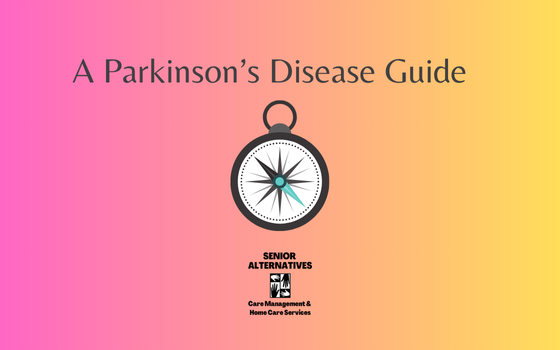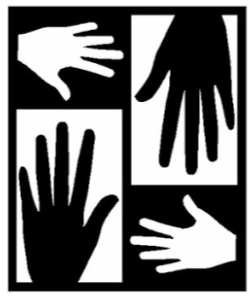April 4, 2025

Parkinson’s disease is a condition that affects millions worldwide, yet it’s often misunderstood. Whether you are a spouse or an adult child concerned about your aging parent, understanding Parkinson’s is the first step toward providing the best care possible.
This blog explores the essentials of Parkinson’s disease, including who it affects, what it entails, how it progresses, and when to seek care. We’ll also look into treatment options, from standard medications to holistic remedies, that might help ease symptoms and improve quality of life.
What Is Parkinson’s Disease?
Parkinson’s disease is a progressive neurological disorder that primarily affects movement. It occurs when neurons in the brain that produce dopamine, a chemical critical for controlling movement, begin to die or function poorly. This leads to the motor and non-motor symptoms that define the disease.
Key Facts About Parkinson’s Disease
- Prevalence: Nearly 1 million people in the United States live with Parkinson’s, and about 60,000 are newly diagnosed each year.
- Age factor: While it typically develops after the age of 60, around 4% of cases occur in people under 50, a condition often referred to as early-onset Parkinson’s.
- Gender disparity: Men are 1.5 times more likely to develop Parkinson’s than women.
Common Symptoms of Parkinson’s Disease
Parkinson’s symptoms present differently for everyone, but they are often divided into two categories:
Motor Symptoms
- Tremors, typically beginning in the hands or fingers.
- Slowed movement (bradykinesia), making daily tasks more challenging.
- Muscle stiffness, leading to pain and limited range of motion.
- Postural instability, leading to balance issues and a higher risk of falls.
Non-Motor Symptoms
- Sleep disturbances.
- Depression or anxiety.
- Cognitive changes, including memory issues.
- Autonomic dysfunction, like difficulty with digestion or blood pressure control.
How Is Parkinson’s Disease Diagnosed?
Currently, there is no single test to confirm Parkinson’s disease. Diagnosis often relies on medical history, symptom observation, and neurological examinations.
Diagnostic Steps
- Clinical History: A physician will ask about symptom onset, family history, and lifestyle factors.
- Neurological Exam: This includes assessing motor movements, reflexes, and coordination.
- Imaging Tests (Optional): Tools like MRI and DaTscan may rule out other conditions that could mimic Parkinson’s symptoms.
What Causes Parkinson’s Disease?
The exact cause of Parkinson’s remains unknown. However, researchers attribute its development to a combination of genetic, environmental, and lifestyle factors.
- Genetics: Mutations in specific genes (such as LRRK2 and SNCA) are linked to Parkinson’s, though these are rare.
- Environmental Factors: Prolonged exposure to pesticides, herbicides, or heavy metals may increase risk.
- Lifestyle Contributors: Smoking, declining physical activity levels, and poor diet might play a role in certain cases.
When Should You Seek Medical Help?
While a diagnosis of Parkinson’s is best left to a neurologist, here are some signs that it’s time to see a professional:
- Persistent tremors that worsen over time.
- Noticeable changes in balance or coordination.
- Difficulties with speech or facial expressions.
- Increasing difficulty completing routine tasks.
Early diagnosis is key to managing Parkinson’s effectively and preserving quality of life.
Treatments for Parkinson’s Disease
While there is currently no cure for Parkinson’s disease, various treatments can manage symptoms and improve quality of life. These options range from conventional medications to holistic approaches.
Standard Treatments
- Medications
-
-
- Levodopa and Carbidopa (Sinemet): The most effective treatment for replenishing dopamine levels.
- Dopamine Agonists: Drugs like Pramipexole and Ropinirole mimic dopamine in the brain.
- MAO-B Inhibitors (e.g., Selegiline): These help prevent the breakdown of dopamine by inhibiting a specific enzyme.
-
- Surgical Options
-
-
- Deep Brain Stimulation (DBS): A medical device is implanted to send electrical impulses to brain regions, reducing motor symptoms for eligible candidates.
-
Holistic and Lifestyle-Based Approaches
Alongside traditional treatments, holistic methods can make a meaningful impact on managing symptoms and improving daily function.
Nutrition
A balanced diet rich in whole grains, fruits, vegetables, and healthy fats can promote better brain function. Specific tips include:
- High-fiber foods to counteract constipation.
- Antioxidant-rich foods like berries and spinach to combat oxidative stress, which may contribute to disease progression.
Exercise
Exercise helps with mobility, balance, and mental health. Popular exercises for Parkinson’s include:
- Yoga to improve flexibility.
- Strength training to reduce muscle stiffness.
- Dance classes, such as tango, which combine movement with mental stimulation.
Speech and Occupational Therapy
Speech therapy strengthens vocal cords and aids communication, while occupational therapy provides strategies to handle daily tasks more efficiently.
Mindfulness Practices
Meditation and relaxation techniques can alleviate anxiety and depression while enhancing overall well-being for both patients and caregivers.
How Can Caregivers and Loved Ones Support?
Supporting someone with Parkinson’s involves more than assisting with physical challenges. Emotional and social support is equally important.
Here are ways caregivers and family members can help:
- Educate yourself about the illness to understand its progression.
- Participate in caregiving support groups to share experiences and solutions.
- Encourage small lifestyle adjustments, like engaging in daily exercises or hobbies.
Looking Ahead in Parkinson’s Research
Medical research is advancing rapidly in the search for better Parkinson’s treatments and potential cures. Promising developments include genetic therapy, personalized medicine approaches, and new biomarkers for earlier diagnosis. Although a cure is not imminent, innovations in science continue to bolster hope.
Supporting Someone on the Journey to Better Care
Understanding Parkinson’s disease is a crucial step toward navigating its challenges and options effectively. Whether you’re a referral partner or concerned family member, staying informed can help patients find comfort and solace on this difficult path.
If you’re looking for expert guidance to help manage symptoms or provide more comprehensive care, don’t hesitate to consult local neurologists or support networks specifically tailored to Parkinson’s. PD Active is an organization in our area that provides an extensive list of resources. Send a request to info@pdactive.org for more details.
To schedule a free 45 minute consultation about elderly healthcare related issues, reach out to us @ 888.451.4290.
We are here to help you navigate the challenges of aging.
Related Articles
Why People in Blue Zones Thrive and Live Longer
Blue Zones are regions where people live longer, healthier lives compared to the global average. These areas have been studied extensively to find common denominators and answers about what makes these places unique. One of the key components of these lifestyles is community engagement, or having a strong sense of belonging and support from others. Read on to know more about Blue Zones and how we can duplicate their lifestyle and best practices.
A guide to effectively enhance, remodel or retrofit homes and environments for older adults.
This week, we created a guide on how to accommodate a home or environment for older adults, especially people with memory loss which can be vital for their comfort and well-being. Whether the memory loss stems from conditions like Alzheimer’s or short-term impairments, retrofitting a home can significantly enhance safety, accessibility, and overall quality of life.
Celebrating Leadership & Legacy on International Women’s Day
Today, in honor of International Women’s Day, we celebrate by sharing the story of our very own Executive Director, Tanya Trapani, MBA.





